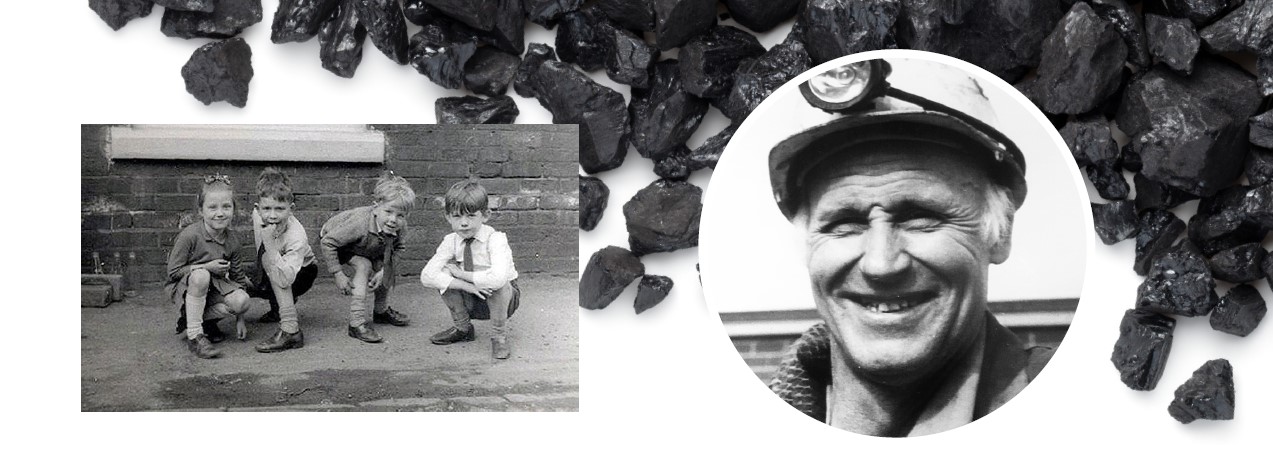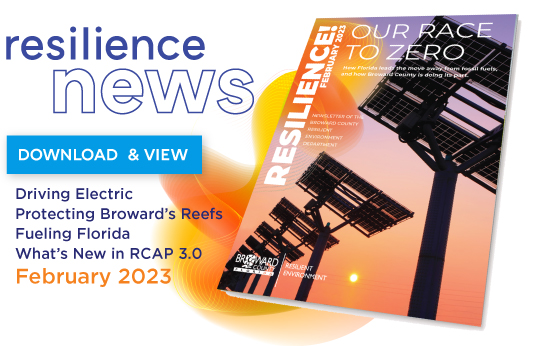
Left: With my brother and cousins, Thornecliffe, South Yorkshire. Right: My father ready for work at Cortonwood Colliery.
Andy Royston looks at Florida's fossil fuel legacy, and reveals a personal connection with old king coal.
Originally published in the FebrUary 2023 Reslience Newsletter
In his keynote speech to the 14th Annual Southeast Florida Regional Climate Leadership Summit, Rafe Pomerance reminded delegates of the moment the dangers of coal emissions came into focus.
The year was 1979, and it came within a U.S. Environmental Protection Agency (EPA) technical report about coal to the Carter/Mondale administration - EPA-600/7-78-019. Pomerance was then a lobbyist for Friends of the Earth.
In a chapter on environmental regulation, Pomerance read that “the continued use of fossil fuels might, within two or three decades, bring about significant and damaging changes to the global atmosphere.”
He quickly arranged for the report’s writer, geophysicist Gordon MacDonald, to meet with the EPA, National Security Council, and the White House.
Today, international climate goals recommend a rapid decline in global coal emissions. Without this, says the International Energy Agency (IEA), it will be impossible to avoid severe impacts from a changing climate.
Halting the use of coal has proved easier said than done. A report by the U.S. Energy Information Administration (EIA) noted that 2018 saw the lowest U.S. coal consumption since 1979, as well as the second-greatest number on record of coal-fired power plants shutting down. It’s taken forty years to put on the brakes.
My own relationship to coal and energy production is complicated.
Three generations of my family were proud coal miners, and as I child I could see two major collieries from my bedroom window. Railway trucks rattled through our small village night and day. My father and three uncles all toiled down the mines, while my brother worked in company supplying coal cutting technology. The coal communities around me were close-knit and thriving, rooted in the Methodist chapels and strong trade unions. But then, suddenly things changed.
The coal fields of South Yorkshire were decimated by the policies of the British government in the late 70s, not on climate grounds but economics - overseas operators could ship coal halfway around the world for a fraction of the cost of domestically produced coal.
British coal was simply priced out of the market. The move away from domestic coal meant a lot of pain for the community I grew up in. Extended family members, including my father, lost livelihoods during those times.
By the time that Rafe Pomerance was raising the dangers of fossil-fuel combustion to the Clinton/Gore administration, Britain was already well on the way to closing the majority of its coal mines.
By 2003 Britain only took a third of its energy from coal fired power, so the speed that the country cut its reliance on cheap imported coal and moved to gas- and nuclear-powered energy was remarkable.
More recently, between 2012 and 2018, coal-fired generation fell by 88 percent. Today the UK routinely experiences extended periods where coal contributes no electricity at all to the national grid, while coal-fired power plants are being repurposed.
COAL IN THE USA
According to the latest data release from clean energy research group BloombergNEF2, global clean energy investment set a $1.1 trillion record in 2022, matching fossil fuels for the first time. It is also short of what is needed. In order to get on track for net-zero emissions in 2050, the report estimates the world would need to immediately triple this $1.1 trillion spend — and add hundreds of billions more for the global power grid.
In the USA electricity generation from renewable sources, such as hydropower, wind, and solar, accounted for 20% of electricity generation both in 2020 and in 2021. The EIA expects that share to increase to 22% in 2022 and to 24% in 2023. Global solar PV capacity is set to almost triple over the 2022-2027 period, surpassing coal to become the largest source of power capacity in the world.
FLORIDA
Florida does not have any coal reserves or production and has historically relied on coal from other states and from overseas to meet its limited coal demand.
It does, however, have a fossil fuel problem. Florida was third highest in US CO2 emissions according to a 2017 EIA Report and has 6 coal fired plants with a combined capacity of 400MW still running, representing 84.0% of Florida’s coal energy generating capacity, and 25.7% of the state’s total CO2 emissions.
FPL continues to set a fine example. The Palm Beach Post reports that coal made up just 2.3% of FPL’s fuel mix in the 12 months ending in March 2022, and this came from partly-owned coal power plants outside of Florida. Use of oil as a fuel to power its electric generators sits at less than 1% today.
FPL closed its last Florida coal-fired plant in 2020, ending its use of coal in the state. FPL purchased the Indiantown Cogeneration plant, located in Martin County, in 2017 for the sole purpose of shutting it down. The formal retirement marks the end of coal in FPL’s power plant operations.
All this accumulates – The EIA reports that coal consumption in Florida’s electric power sector fell from 29 million tons in 2008 to less than 7 million tons in 2020.
FPL is leading one of the largest solar expansions in the country as part of a plan to install 30 million solar panels by 2030. With over 12 million panels installed, the installation is more than 40% complete.
In addition, the company continues to look at other innovative sources of clean energy, including the world’s largest solar-powered battery storage facility in Manatee County, now more than 75% complete. A new “green hydrogen” pilot project is also under way; the product of harnessing the sun’s energy to power equipment that splits hydrogen and oxygen within water.
Overall FPL has improved its carbon-emissions rate by 40% over 20 years, eliminating its use of foreign oil, shuttering all its coal plants in Florida, and saving more than $12 billion in avoided fuel costs. In 2022 the company announced plans to rely on non-carbon-emitting sources for 99% of its electric generation by 2045 Under its “Real Zero” program.
In his keynote, Rafe Pomerance, left us in no doubt that Florida’s role is pivotal.
“We are living in a new epoch. This requires the largest and fastest transformation in economic terms that the people of this planet have ever attempted, which is the energy transformation away from carbon dioxide producing technologies.”
“We have to move very fast in this transition,” said Pomerance.
“Looking at the data, all the analysis, Florida is key. Florida has the ultimate power to move the issue as the impacts here are so big. Whether it is sea level rise, coral bleaching, more intense hurricanes. Florida is a powerful place, a major global force. Florida can move the world.”
ANDY ROYSTON
Program/Project Coordinator, Design and Marketing
Broward County Resilience Unit

Florida Power & Light (FPL) demolished four smokestacks and boilers (pictured right) at its 1,254 MW Port Everglades oil- and natural gas-fired power plant in Florida on July 16, 2013. The first of the plant's four units came into operation in 1960 and burned oil to make electricity, the stacks discharging sulfur dioxide, nitrogen oxide and other pollutants.
In its place is now the Port Everglades Next Generation Clean Energy Center, a combined-cycle natural gas-fired power plant which came online in 2016.
This new, state-of-the-art power plant uses high-efficiency, combined-cycle technology, running clean, low-cost American natural gas to produce up to 1,277 megawatts of electricity. The new FPL plant reduced air emissions by more than 90 percent and cut the carbon dioxide emissions rate in half.

